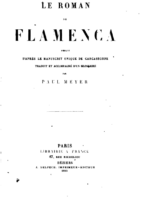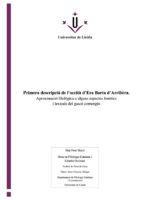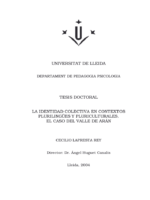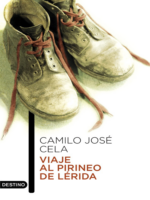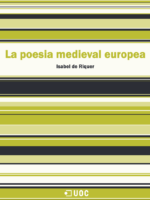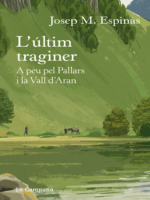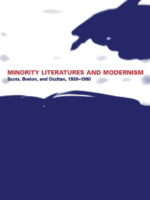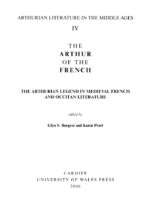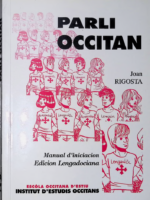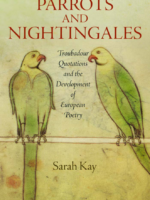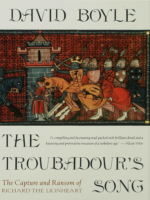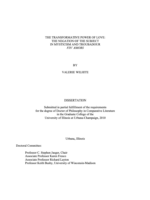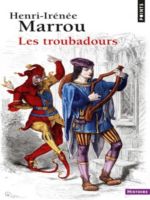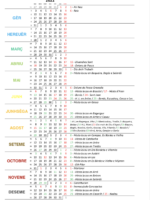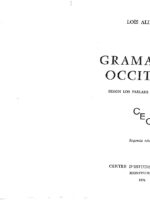-
-
Primera descripció de l’occità d’Era Barta d’Arribèra
0,00 €Dins del domini gascó, i alhora reflectint la situació occitana general, hi ha una variació interna notòria entre les diferents varietats que omplen el territori. En aquest sentit, el comengès, que enclavem en el gascó pirinenc oriental (subdialecte que abasta una zona que comprèn la Vall d’Aran, l’àrea de La Varossa, el Comenge meridional i el Coserans), es diferencia d’una manera prou evident d’altres variants més occidentals, justament per la seua condició de parlar fronterer, situat en una zona interferencial, en paraules de Bèc (1968), entre el gascó i el llenguadocià. El treball que prossegueix mira de fer una descripció d’alguns aspectes fonètics i lexicals d’un dels municipis de parla comengesa, Era Barta d’Arribèra, localitzada estratègicament a pocs quilòmetres de Sent Gaudenç, capital històrica del Comenge i de l’antiga comarca del Nebosan.
-
La Identidad colectiva en contextos plurilingües y pluriculturales
0,00 €La comarca del Valle de Arán se encuentra situada en el extremo nor-occidental de la provincia de Lleida, en plenos Pirineos. En las últimas décadas, esta comarca está experimentando un profundo proceso de transformación sociodemográfica y cultural.La situación viene determinada por varios aspectos:
A,- Un fuerte incremento de población, proveniente principalmente de la inmigración.
B,- La coexistencia en el territorio de tres lenguas oficiales; el occitano-aranés, como lengua propia de la comarca, el catalán y el castellano.
C,- Como consecuencia de los dos primeros aspectos, una situación de contacto entre lenguas y culturas diferenciadas.Con este marco de fondo, en nuestra investigación nos proponemos analizar el proceso de construcción de la identidad colectiva en el territorio. A partir del uso combinado de técnicas de investigación social cuantitativas y técnicas de investigación social cualitativas, se demuestra el importante papel que juega la lengua propia, tanto en la definición de la identidad colectiva aranesa como en su proceso de construcción. La articulación de este fenómeno con la situación social de la lengua, caracterizada por su situación minorizada, una conciencia de reisgo real de pérdida de su función comunicativa y, asociada a ella, de su función simbólica, permite comprnder la génesis de actitudes, acciones e incluso diferentes conflictos sociales que se producen en el territorio.
-
Viaje al Pirineo de Lérida
0,00 €«La vida se inventó para vivir y para dejar vivir, para caminar, para amar a las mujeres que cruzan por el camino, para comer el pan honesto y el jamón curado, para beber el agua de la fuente y el vino de los lagares, para ver mundo y hablar de las cosechas y las navegaciones, para bañarse en el restaño del río que cae del monte y secarse después del sol, sobre la yerba».
Con esta premisa, Cela nos adentra en un recorrido apasionante por parajes de privilegiada belleza, como el Pallars Sobirà, el puerto de la Bonaigua o el Valle de Arán o Salardú. Sin abandonar su estilo inconfundible, aquel que mezcla con acierto la descripción poética y a la vez irónica con diálogos vivos e implacables, Cela capta de manera magistral la idiosincrasia de un lugar y de una época excepcionales. Una obra que recordará al viajero al Cela de obras tan emblemáticas como Viaje a la Alcarria, Del Miño al Bidasoa o Primer viaje andaluz.
-
La poesia medieval europea
0,00 €L’originalitat i la qualitat artística dels trobadors medievals han transcendit el seu temps. Forjada entre els segles XI i XIII, la seva poesia sobre temes universals com l’amor, el vituperi o el lament fúnebre, es llegeix avui amb el mateix delit que s’escoltava llavors. Aquest llibre ens acosta a alguns dels seus màxims exponents i ens delecta amb petites joies de la lírica trobadoresca.
-
L’últim traginer: A peu pel Pallars i la Vall d’Aran
0,00 €Espinàs converteix l’experiència de la caminada en una crònica viva en la qual el lector s’aventura amb l’escriptor per camins desconeguts del Pallars i la Vall d’Aran.
L’últim traginer ens transporta a un temps en què el Pallars i la Vall Aran no tenien estacions d’esquí, els guàrdies civils anaven amb bicicleta i la centraleta de telèfons de Salardú la feia funcionar, manualment, una noia en un racó de menjador d’una antiga fonda. El lector s’aventura amb l’escriptor pels camins i les valls d’aquestes contrades, en una crònica que reviu un món rural perdut i nostàlgic de mitjan anys cinquanta.
Josep M. Espinàs, a través d’aquesta crònica del 1956, reviu uns fets, uns personatges i un paisatge que avui ja formen part del passat, però que l’autor manté vius per sempre amb el seu testimoni de narració viva.
-
Minority Literatures and Modernism: Scots, Breton, and Occitan, 1920-1990
0,00 €A quiet renaissance has been unfolding in certain parts of Europe – a renaissance of literature written in minority languages. In this book, William Calin explores the renaissance through an examination of twentieth-century works in Scots, Breton, and Occitan minority languages flourishing inside the borders of the United Kingdom and France.
For each of the three bodies of literature Calin considers major authors whose works include novels, poetry and plays, and shows that all three literatures have evolved in a like manner, repudiating their romantic folk heritage and turning instead to modern and postmodern concerns. Drawing on current critical theories in periodization, postcolonialism and cultural studies, Calin raises a range of comparative questions: Is there a common form of narrative prevalent in minority cultures that is neither realism nor metafiction? Is the minority-language theatre limited to plots treating past history and the rural present? What is the relationship between the minority literature and literature in the national language? What kind of history should be written on the literatures of Scotland, Brittany and the South of France, manifest in their several languages?
Calin’s pioneering study is the first comparative scrutiny of these minority literatures and the first to bring all three together into the mainstream of present-day criticism. His work demonstrates the intrinsic importance in their twentieth-century renewal, as well as their contribution to global culture, in both aesthetic and broadly human terms.
-
The Arthur of the French: The Arthurian Legend in Medieval French and Occitan Literature
0,00 €This major reference work is the fourth volume in the series “Arthurian Literature in the Middle Ages”. Its intention is to update the French and Occitan chapters in R.S. Loomis’ “Arthurian Literature in the Middle Ages: A Collaborative History” (Oxford, 1959) and to provide a volume which will serve the needs of students and scholars of Arthurian literature. The principal focus is the production, dissemination and evolution of Arthurian material in French and Occitan from the twelfth to the fifteenth century. Beginning with a substantial overview of Arthurian manuscripts, the volume covers writing in both verse (Wace, the Tristan legend, Chretien de Troyes and the Grail Continuations, Marie de France and the anonymous lays, the lesser known romances) and prose (the Vulgate Cycle, the prose Tristan, the Post-Vulgate Roman du Graal, etc.).
-
Lexique Descriptif occitan-français
0,00 €Orthographe et prononciation, Grammaire et syntaxe, Lexique A à ZHéritière du latin, la langue d’oc s’est formée dans la continuité de la désagrégation de l’empire romain. On fixe généralement le XI ème siècle comme la période achevant définitivement la formation de la langue nouvelle. Dès ses origines, comme pour les autres langues latines, la langue d’oc présentait des variations régionales, dont les grands dialectes actuelles sont les continuateurs.
Le mot occitan, ancien mais quasiment inusité pendant longtemps, est aujourd’hui admis pour désigner l’ensemble des parlers prolongateurs de l’ancienne langue d’oc. Il remplace vantageusement le terme provençal autrefois utilisé avec le même sens.
Il est de nos jours couramment admis de classer les parlers occitans en six dialectes: le limousin, le gascon, l’auvergnat, le languedocien, le vivaro-alpin et le provençal. Cette classification, basée sur des critères uniquement linguistiques, ne recouvrent toutefois pas la délimitation des provinces de même nom. Au sein de l’Occitanie, le vivaro-alpin lui-même souffre d’un défaut d’identification sociale claire, et il est souvent désigné sous les noms de ‘dauphinois’, ‘nord-provençal’, ‘gavot’, ‘provençal-alpin’.
-
Parli occitan
0,00 €Manual simple e eficaç per debutar un aprendissatge de l’occitan (var. lengadocian).
Joan Rigosta (en francés Jean Rigouste, Senalhac del Causse, 25 de novembre de 1938) es un pedagòg e lingüista occitan especializat en toponimia. Foguèt ensenhaire de letras als licèus d’Agen, de Merinhac e de Brageirac. Trabalhèt tanben a l’IUFM d’Aquitània e a l’Universitat de Bordèu III.
-
Dictionnaire français-occitanien
0,00 €Ce Dictionnaire comprend donc les 37,000 mots de Littré, plus 2,200 termes recueillis de part et d’autre. Il eût été facile d’en augmenter le volume en y faisant place aux proverbes dont la langue d’Oc est si pittoresquement émaillée, à l’explication des us et coutumes qui surnagent encore dans l’envahissement de l’uniformité désespérante où se monotonise l’univers entier, à la description de nos vieilles cités, à la généalogie des hommes qui ont illustré notre patrie ensoleillée ; mais, outre que ces données ont été déjà consignées ailleurs, le plan du présent livre devait le maintenir en un cadre restreint, dans un format accessible au grand nombre ; il ne comporte pas de développements historiques ni géographiques : il ne vise que la Unguistique, le lecteur n’y trouvera rien d’inutile. Nous avons néanmoins la confiance qu’il y rencontrera tout ce que l’état actuel des sciences et des lettres lui donne le droit d’y chercher: les idiotismes particuliers à notre Midi, l’expression propre qui échappe parfois, lorsque deux langues se côtoient, le mot pittoresque qui n’apparaît pas au moment désiré, l’abondance variée que l’éclatante floraison du Félibrige réclame de ses amoureux.
-
Dictionnaire occitan-français selon les parlers languedociens
0,00 €Sous un mot occitan, on trouve tous ses dérivés, leurs sens et leur étymologie ; variantes graphiques et phoniques. Suppléments: table des préfixes et suffixes savants et populaires. Ce dictionnaire bilingue de langue vivante est une base pour l’étude de l’occitan languedocien et de son écriture, comme pour la recherche.
-
Parrots and nightingales : troubadour quotations and the development of Europea poetra
0,00 €The love songs of Occitan troubadours inspired a rich body of courtly lyric by poets working in neighboring languages. For Sarah Kay, these poets were nightingales, composing verse that is recognizable yet original. But troubadour poetry also circulated across Europe in a form that is less well known but was more transformative. Writers outside Occitania quoted troubadour songs word for word in their original language, then commented upon these excerpts as linguistic or poetic examples, as guides to conduct, and even as sources of theological insight. If troubadours and their poetic imitators were nightingales, these quotation artists were parrots, and their practices of excerption and repetition brought about changes in poetic subjectivity that would deeply affect the European canon.
The first sustained study of the medieval tradition of troubadour quotation, Parrots and Nightingales examines texts produced along the arc of the northern Mediterranean—from Catalonia through southern France to northern Italy—through the thirteenth century and the first half of the fourteenth. Featuring extensive appendices of over a thousand troubadour passages that have been quoted or anthologized, Parrots and Nightingales traces how quotations influenced the works of grammarians, short story writers, biographers, encyclopedists, and not least, other poets including Dante and Petrarch. Kay explores the instability and fluidity of medieval textuality, revealing how the art of quotation affected the transmission of knowledge and transformed perceptions of desire from the “courtly love” of the Middle Ages to the more learned formulations that emerged in the Renaissance. Parrots and Nightingales deftly restores the medieval tradition of lyric quotation to visibility, persuasively arguing for its originality and influence as a literary strategy.
-
The Troubadour’s Song: The Capture and Ransom of Richard the Lionheart
0,00 €Chronicles the events surrounding the capture and release of King Richard I during the twelfth-century Third Crusade, describing the ransom delivered by Eleanor of Aquitaine that represented one quarter of England’s wealth and the subsequent legend that evolved about the singing troubadour, Blondel. By the author of The Sum of Our Discontent.
-
Songs of the Women Trouvères
0,00 €We bring together here the songs of all medieval women whose names are recorded in the rubrics or tables of contents of various Old French manuscripts as composers of songs or as participants in jeux-partis and tensons (debate poems). The songs by women whose names are known are relatively few in number, but there were undoubtedly many more women composers, and whereas their names are lost to us, some of their songs are probably still extant, though bereft of proper attribution. Accordingly, we have chosen to include a generous sampling of anonymous works—chansons de femme (women’s songs), rondeaux, and motets—both because they offer a wide variety of female voices and because some of these pieces may well have been composed by women. We hope in this way to rectify a situation that for many years has denied women their rightful place in the pantheon of Old French medieval lyric poets.
For, as surprising as it may seem, the very title of our anthology, Songs of the Women Trouvères, makes a bold, even controversial, statement. Although nearly all scholars now acknowledge the existence of medieval women who composed poetry in other romance languages (Occitan, Spanish, Italian, Galician- Portuguese), most have accepted without question Pierre Bec’s contention that none of the songs composed in northern France in the twelfth or thirteenth centuries are the product of a woman trouvère (Bec 1979: 236). A number of Old French songs feature women’s voices ( féminité textuelle), particularly in the lyric type known as the chanson de femme. However, féminité textuelle does not necessarily imply female authorship (féminité génétique), to use a distinction introduced by Bec himself (1979: 235–36). The majority of these songs are anonymous, but because most of the ones that are attributed in the manuscripts are credited to a male author, Bec has concluded that no Old French songs of the period in question were composed by women. Although many have agreed with Bec, the literary history of the past 125 years includes a few dissenters who base their opinion on evidence that until recently was either ignored or not seriously considered. A brief summary of that history is instructive, as it highlights the major arguments for and against the historical existence of the women trouvères.
-
The transformative power of love
0,00 €This dissertation compares the works of select troubadours with three mystical tracts in order to present the similarities found in these two literary traditions. Mystical writings have a far longer history reaching into antiquity and continuing until the present day. The traces in the manuscript traditions situate in the late eleventh century a new poetic form in Occitan with a focus on earthly love. The love as it is described in the songs of the composers who write or sing about it comes to be called bon amors or fin’ amors, the term we use today to name the love of the troubadour tradition. The period of lyrical production in Occitan by troubadours speaking of fin’ amors does not endure more than three centuries if we begin our count with Guilhem IX (1071-1126) and close with the poet so often called the last of the troubadours, Guiraut Riquier (1254-1292). These two traditions of love literature are thus distinguished by the nature of their literary histories and also by the loves they describe. Despite this, the shape of the loves they discuss as well as the language used to speak about love are not so different.
-
Les Troubadours
0,00 €Il serait temps de nous défaire enfin de ce poncif du troubadour errant, la guitare au côté, égayant de ses ballades les longs loisirs des tristes châteaux gothiques. C’est à cette image conventionnelle et fade que Henri-Irénée Marrou entend substituer la véritable identité et histoire des troubadours, en analysant plus généralement la “renaissance” du XIIe siècle.C’est à cette époque, en pays d’Oc, que les troubadours ont inventé l’amour, le mot comme la chose. C’est l’idéal quasi mystique de l’amour courtois qu’ils célèbrent dans leurs chansons, amour humain bien réel qui se trouve cependant presque élevé à la dignité d’un culte.La première édition de cet ouvrage date de 1961.Henri-Irénéee Marrou (1904-1977) est un des grands historiens de l’Antiquité tardive, spécialiste d’Augustin et de l’augustinisme ; a notamment publié au Seuil, L’Eglise de l’Antiquité tardive (1985) et Saint Augustin et l’augustinisme (2003).
-
Les troubadours. Une histoire poétique
0,00 €Les troubadours sont, au XIIe siècle, les auteurs, immensément admirés, des plus anciennes chansons d’amour composées dans une des langues nouvelles de l’Europe, la langue d’oc. Le tremblement du désir et celui de la crainte, la ferveur et la frustration, la jalousie et la jouissance, tout cela ils l’ont dit de façon si nouvelle et si intense que leurs chansons résonnent encore dans les mots d’amour d’aujourd’hui. Le beau livre de Michel Zink rend sa fraîcheur à cette poésie vieille de neuf siècles en la suivant dans ses méandres, en disant au fil des poèmes, qu’il cite en grand nombre, juste ce qu’il faut pour qu’elle nous parle, pour qu’elle nous enchante et pour qu’elle vive en nous.

